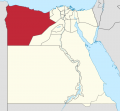Thinis
Da Ufopedia.
(→See also) |
(→Galleria immagini) |
||
| (Una revisione intermedia non mostrata.) | |||
| Riga 16: | Riga 16: | ||
<gallery> | <gallery> | ||
Immagine:Matruh_in_Egypt.svg.png | Immagine:Matruh_in_Egypt.svg.png | ||
| + | Immagine:Map_of_OIC.png | ||
Immagine:Governadorat_de_Matruh.png | Immagine:Governadorat_de_Matruh.png | ||
Immagine:Flag of Egypt svg.png | Immagine:Flag of Egypt svg.png | ||
| - | Immagine: | + | Immagine:Flag_of_OIC.png |
Immagine:Flag of the United Nations svg.png | Immagine:Flag of the United Nations svg.png | ||
</gallery> | </gallery> | ||
Versione attuale delle 15:16, 13 apr 2016
| Questa voce ha bisogno di essere tradotta. |
Thinis, nome greco di una città egizia (Tanit) sita nei pressi di Abydos.
Capoluogo dell'ottavo distretto dell'Alto Egitto era per tradizione luogo di origine dei sovrani delle prime dinastie egizie che appunto sono dette tinite.
Thinis is the yet undiscovered city from where Egypt, according to Manetho's chronological list, was united by the Thinnite Confederacy during the reign of the Pharaoh Menes. It is thought that the ancient city of Thinis, or Tjeny as it is called in the Egyptian language, is located near Girga. It is said that the first Pharaohs of Egypt were buried near Thinis, at its ancient necropolis. Beit Khallaf from the Third Dynasty is located nearby.
Indice |
Archaeological Controversy
As mentioned above, Thinis is yet to be discovered, and apart from written sources that speak of the city’s impact on the history of Egypt (the Thinnite Confederacy’s uniting of the two kingdoms), few archaeological remains have been found to indicate the actual location and existence of the city. Historical documentation indicated that the city is highly likely to be located near the modern town of Girga, and if the ancient remains would lie below the present urban development it could explain the near non existing archaeological evidence of Thinis. The written sources also lack information of the foundation, and in its earliest appearance a number of centuries before the unification it is already a developed town with temples and trade. Nor does it exist any written source that tells about the destruction of the city. Understandably, due to the distance of time, the written sources of the foundation may have been lost during history, as it may not have been a single destruction but a long lasting decay of the city’s influence. There is also a possibility that the city is more of a religious myth, wherefrom the Divine Pharaohs’ ancestry comes, and may therefore exist in written documents due to misunderstandings between history telling and mythological stories. Most Egyptologists however agrees to that it is most likely that Thinis was an actual city, and evidence have been found on the Narmer Palette that the founder of the First dynasty of Egypt, that is said to origin from Thinis, may have existed. It does also suggest that Menes and Narmer may have been the same person.
Galleria immagini
Sources
- Grimal, Nicolas, A History of Ancient Egypt, Oxford Blackwell, 1992
- Shaw, Ian, The Oxford History of Ancient Egypt, Oxford University Press, 2000





